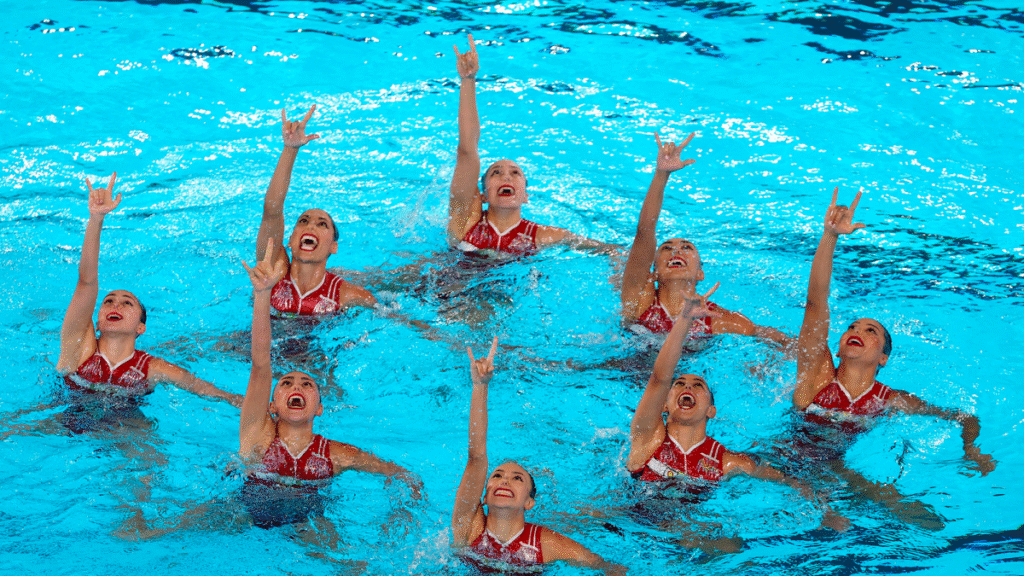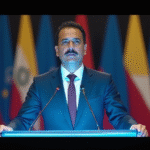Introduction
Dividing sports organizations does not necessarily mean destruction, especially in the case of Mexico’s aquatic sports. Starting this year, these sports have adopted a new formula to clean up their structure and reputation after years of turbulence with the now-defunct Mexican Swimming Federation (FMN).
Background and Recent Developments
In early April 2025, Mexico’s National Sports, Physical Culture and Recreation Council (CONADE) announced the creation of the Mexican Diving Federation and the Mexican Artistic Swimming Federation. They also hinted at the formation of the Mexican Polo Aquatics Federation and the Mexican Swimming Federation, with approval from the Mexican Olympic Committee (COM).
The Fall of the FMN
The last two Olympic cycles (Tokyo 2020 and Paris 2024), along with previous years, were marred by internal issues such as athletes’ complaints about a lack of resources and external criticism from the International Federation of Water Sports (World Aquatics) due to Mexico’s organizational problems.
Despite these challenges, Mexico continued to excel in diving and artistic swimming at the Olympics and other international competitions.
The Path Forward
The primary tasks for the four new aquatic federations are to rebuild a transparent image in fund management and promote specialized talent development.
Expert Opinions
Nelson Vargas, former CONADE director (2000-2006) and early 80s FMN president, emphasized the importance of transparency in separate federations: “It’s crucial that each federation operates independently, with distinct technical, financial, and program areas. Previously, all power was concentrated in one person’s hands—Kiril Todorov.”
Juan Manuel Rotter, Corporate Games México director and deportation professional in public and private sectors, supports the new structure: “Creating federations from scratch is a positive step. Mexico has effectively disassociated itself from the FMN, and now it’s time to build new federations based on successful models in countries like the US and Australia.”
Budget and Objectives
According to an interview with ESPN, the FMN’s budget approached 300 million pesos “over the last decade,” from both public and private sources.
The FMN had 36 associations, covering all 32 Mexican states and four additional organizations, making it the largest federations, operationally speaking, excluding soccer’s budget.
With the new division of aquatic federations, each federation’s budget remains unknown. However, they will have the opportunity to generate resources through alternative means and increase their visibility.
“Each federation should develop its own projects to secure direct funding from affiliated members and competitions. Then, they can manage support from CONADE,” suggests Juan Manuel Rotter.
“CONADE no longer has a single FMN budget but will now manage four federations, each requiring their own budgets, support, and funding situations. This also allows for private sector involvement, creating projects to seek new financing sources. Smaller federations like polo aquatics can lead the way in generating their own budgets through both private and public funding sources.”
Talent Development and Upcoming Events
With the Los Angeles 2028 Olympics on the horizon, talent development is a priority. Before that, Mexico will participate in the Central American and Caribbean Games (2026) and Pan American Games (2027).
The federations must quickly create self-sustaining economic projects and cultivate talent.
“These new regulations require each federation to develop a project leading up to Los Angeles 2028 and plan for four years, not just the next event. It’s crucial that operational federations (diving and artistic swimming) have technical commissions led by top coaches. They create the project, which the federation approves and standardizes for athlete benefit,” emphasizes Nelson Vargas.
The Four New Federations
- Diving: Includes high diving; led by Fernando Platas with a roster of Adriana Jiménez, Alejandra Orozco, Osmar Olvera, Jahir Ocampo, Jorge Carrión, and Eduardo Rueda.
- Artistic Swimming: Led by Charlotte Vega with athletes Nuria Diosdado and Diego Villalobos.
- Swimming: Includes open water and masters categories; leadership and roster to be determined.
- Polo Aquatics: Leadership and roster to be determined.
Key Questions and Answers
- What prompted the division of aquatic sports in Mexico? The division aims to address past organizational issues with the FMN, including financial mismanagement and internal conflicts.
- Who are the key figures in this transition? Nelson Vargas, former CONADE director and FMN president, and Juan Manuel Rotter, Corporate Games México director, have shared their insights on the new structure.
- How will the new federations secure funding? Each federation will develop its own projects, seek direct affiliate and competition funding, and manage support from CONADE.
- What are the upcoming events for Mexican aquatic sports? Mexico will participate in the Central American and Caribbean Games (2026), Pan American Games (2027), and the Los Angeles 2028 Olympics.
- What are the four new federations and their leaders?
- Diving: Led by Fernando Platas with athletes Adriana Jiménez, Alejandra Orozco, Osmar Olvera, Jahir Ocampo, Jorge Carrión, and Eduardo Rueda.
- Artistic Swimming: Led by Charlotte Vega with athletes Nuria Diosdado and Diego Villalobos.
- Swimming: Leadership and roster to be determined.
- Polo Aquatics: Leadership and roster to be determined.






